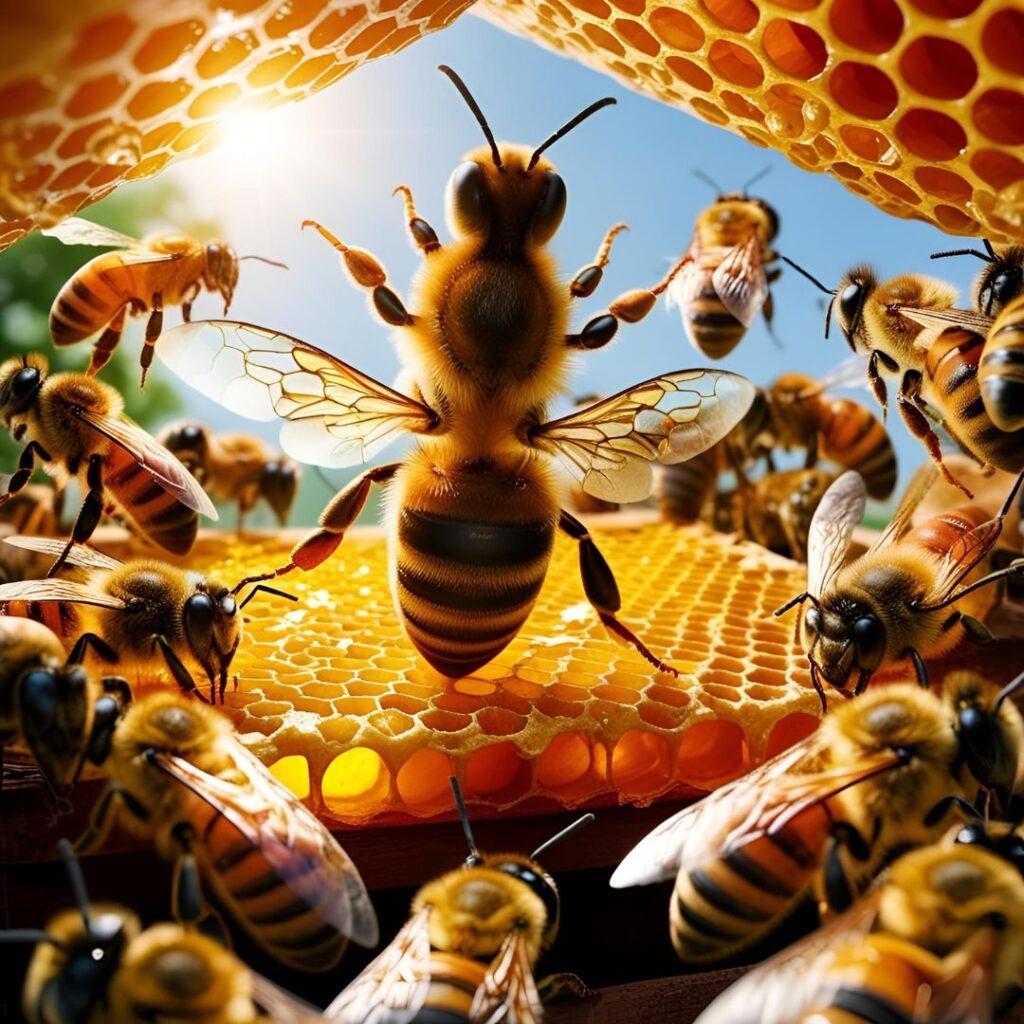Language Without Words: The Diversity of Natural Codes
Long before human language existed, the animal kingdom had already developed a wide range of communication methods. Animal communication is far from simple or purely instinctive. On the contrary, it’s a refined system adapted to the specific needs of each species. Through sounds, body postures, chemical signals, and rhythmic movements, animals around the world share information about food, territory, danger, and reproduction. Understanding these systems not only helps protect species but also challenges the way we define intelligence and interaction among living beings.
The Bee Dance: Moving Maps in Action
One of the most fascinating examples is the “waggle dance” performed by honeybees. When a worker finds a nectar or pollen source, she returns to the hive and performs specific movements that indicate the direction and distance of the food. The intensity of the vibration, the angle of the dance in relation to the sun, and the duration of the movement all communicate precise information. This system is so sophisticated that scientists have decoded the messages and identified the exact locations visited by bees.

Dolphins and Their “Names”: Personalized Sound Communication
In the ocean, dolphins use highly advanced sound-based communication. They produce signature whistles that function like personal names, allowing each individual to identify itself. These unique whistles are learned early in life and used throughout their lifespan. Dolphins can also mimic another dolphin’s whistle, which is similar to calling someone by name. This discovery supports the idea that dolphins maintain complex social relationships and long-term memories.
Visual Signals in Lemurs: Body Language in the Wild
In the tropical environments of Madagascar, lemurs rely heavily on visual communication. Their raised tails, body positions, and facial expressions reveal intentions and emotional states. Some species also use scented secretions to mark territory or warn of threats. The combination of visual and olfactory signals helps maintain group cohesion and prevents conflict, especially in habitats where populations are dense.
Gazelles and Warning Signs: Communication on the Run
In savanna regions, where predators are always lurking, fast communication can mean the difference between life and death. Gazelles have developed a behavior called “stotting”—high, exaggerated jumps that serve as visual warnings to the group. By leaping energetically, the gazelle signals it has spotted a predator and is ready to flee, which may discourage pursuit. At the same time, the display alerts other gazelles, triggering a collective flight response.
Ants and Pheromones: Chemical Communication at Its Finest
Among insects, ants are standout communicators through chemical signaling. They leave pheromone trails to guide others to a food source. When obstacles appear, new paths are created in real time based on efficiency. This form of “chemical conversation” allows massive colonies to operate like a single organism, with no need for vision or sound.
Parrots and Human Sound Learning
While it’s well known that parrots can imitate human voices, many don’t realize they do this for social reasons. Whether in captivity or in the wild, parrots use learned sounds to bond with their group, express emotions, or even influence the behavior of others. The ability to mimic vocalizations outside their natural repertoire is rare among animals and reveals impressive communicative intelligence.
Electric Fish and Invisible Messages
In tropical rivers, certain species of electric fish emit low-voltage pulses as a form of communication. These signals help with navigation and social interactions such as partner recognition, territory defense, or courtship. Each species has a unique electric discharge pattern, and changes in these signals can indicate shifts in mood or intent.
Monkeys and Predator-Specific Alarm Calls
In African forests, vervet monkeys have developed a highly specific alarm system. There’s a distinct call for each type of predator—eagles, snakes, and leopards. Even more interesting is how the group reacts differently to each sound: for eagle alerts, they run to the bushes; for snakes, they stand and look down; and for leopards, they climb into the trees. This functional “vocabulary” shows how even simple signals can carry vital meaning.
Why Study Animal Communication?
Exploring how animals communicate with each other isn’t just scientific curiosity. These studies help protect endangered species, reveal the evolutionary roots of language, and even improve our relationships with domestic animals. They also offer insight into how communication evolved and diversified on our planet. When we observe the precision of a bee’s dance or the personalized whistles of dolphins, we realize the language of life goes far beyond words.





